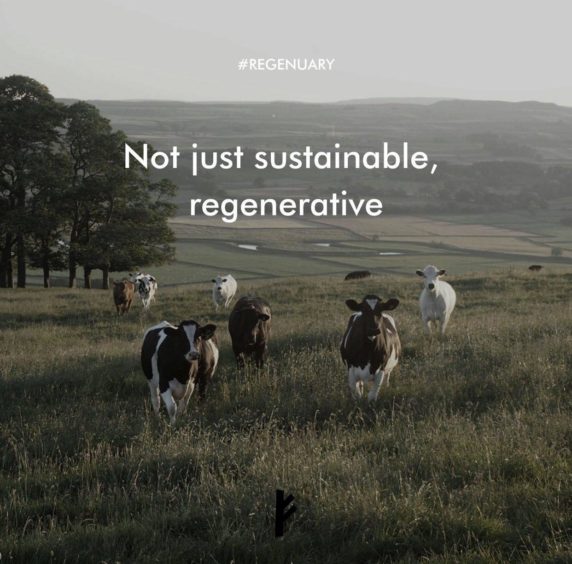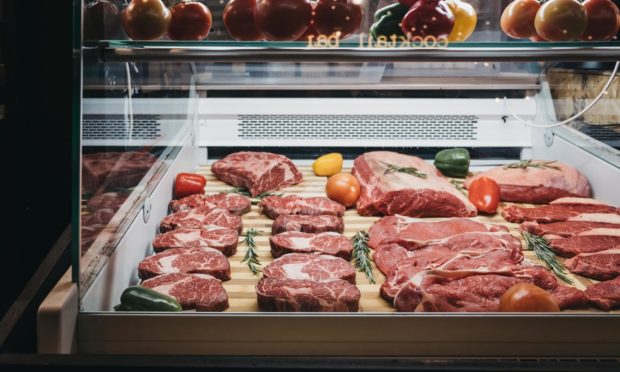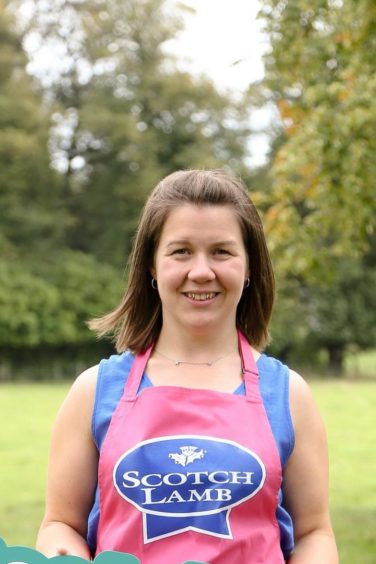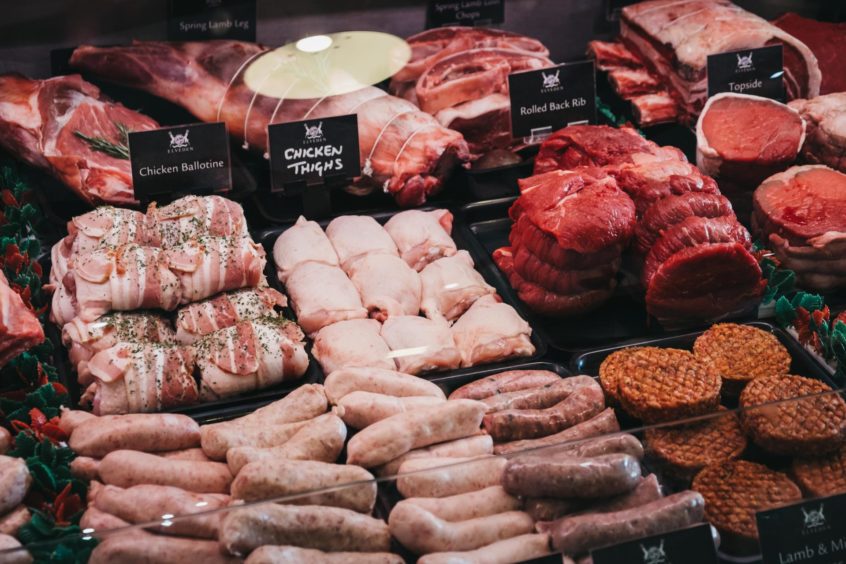There’s a new kid on the block when it comes to food trends. But the Regenuary movement promises more than a diet fad – it’s a way of supporting local producers and sustainable farming. Rebecca Shearer uncovers how it works…
Every year, the first day of January brings about a sense of renewal in every aspect of life, though most notably through diet. Following the amount of food we tend to eat at Christmas, the new year is often when people start thinking about putting some healthier food on their plates.
That said, January is also associated with campaigns such as Veganuary and Dry January that encourage people to change their eating habits.
But a new, similar movement called Regenuary took social media by storm earlier this month and asked people to instead take a look at where the food or drink they’re consuming is coming from.
Started by The Ethical Butcher in London at the beginning of last year, the movement asked people to consider for a month, sourcing their food from regenerative and sustainable farms, as much as possible and to prioritise local and seasonal produce.
The sustainable farming community is already thriving in Scotland and, with more people having turned to supporting local over the past 12 months due to the pandemic, consumer awareness of where our food comes from is becoming more of the norm.
At the start of the year, the #Regenuary conversation took off online, with many people from across the world turning to social media. Some shared their dinners that used local produce…
Tweeting my tea again… italian Scottish mix of Aberdeen Angus meatballs, pasta and wheaten bread #regenuary pic.twitter.com/mI3K1fgP80
— Lucy Beattie (@liusaidhbeattie) January 17, 2021
Slow cooked @Ardochhebridea1 flank on log stove @arkoftaste @slowfooduk @wallbysateri #heritagebreeds #REGENUARY #terramadre pic.twitter.com/l4O2C2VN1P
— Wendy Barrie (@wendygoodfood) January 11, 2021
Some also shared posts showing their support for local businesses.
Starting #Regenuary off well with a delivery from @gourmetbutcher. Loving the eco friendly package. pic.twitter.com/2nIftYNBM3
— Robbie Uriarte 🏳️🌈 (@RobbieUriarte) January 9, 2021
While some on the other side of the world took a more general approach and even changed their name in support of the new movement.
For example, The L.A. CHEFs Twitter account, recently changed its name to “Regenetarianism” and began sharing posts about what regenerative agriculture means.
— REGENETARIANISM (previously L.A. CHEFs Column) (@REGENETARIANISM) November 21, 2020
Jock Gibson of Edinvale Farm in Moray, voiced his support for Regenuary to The Courier.
He said: “I think the Regenuary movement is brilliant as it exposes the false dichotomy expounded by Veganuary of ‘meat bad, plant-based good’. There is an alternative using regenerative agriculture which enhances our biodiversity, protects soil health and is getting close to carbon neutral, if not there already. The meat from these systems generally produce a more nutrient-dense protein with minimal medical interventions”.
Sustainability
But there are others who believe there is more to it than the ‘us versus them’ logic that many are taking Regenuary to believe. One such person is Alix Reid, who lives on a farm near Dunning in Perthshire, and works as the education manager at Quality Meat Scotland (QMS).
Alix believes that sustainability is already on the minds of younger generations, who will be leading the way in future years, but that there is still a long way to go before the word “sustainable” is used in conversations about eating meat.
Alix says: “We have sheep and cattle on our farm and we’re trying to be as sustainable as possible. I’ve got two young children and I really think the young people of today are going to be driving the sustainable movement.
“They’re always asking what we’re doing to be more sustainable and why are we buying certain things and making particular decisions, so we get pressure in the same way as many families do, to make sure we’re being as sustainable as possible, both on the farm and in the house.”
Also, as part of her role with QMS, Alix is regularly promoting and educating people on sustainability and making conscious choices when it comes to food that’s local.
She says: “My job with QMS is to educate people – mainly school children – about how it is sustainable and healthy to eat red meat as part of a healthy balanced diet. We’re not going into schools saying “you must eat meat”, we are saying that if you choose to eat meat, make sure you’re making an informed choice. You can do that by looking for the Scotch Beef PGI, Scotch Lamb PGI and Specially Selected Pork logos which guarantee that the meat has come from selected Scottish farms which adhere to some of the highest production and welfare standards in the world.”
Misconstrued message
Though January is often heralded as the month in which to try out a plant-based diet and participate in Veganuary if you wouldn’t usually, Alix believes that the Regenuary movement has been misconstrued online as a fightback against veganism.

Alix continues: “I think Regenuary has been misconstrued as a movement against Veganuary. It has not been set up to compete, it is an inclusive movement and open to anyone who wants to make more sustainable food choices.
“It’s really been set up to try and encourage shoppers to source food more responsibly – not to focus on excluding one whole food group, but to try and think about where all their food comes from, how it is being produced and if they are making the right decisions to be as sustainable as possible.”
Scotland’s communities
Though Regenuary was initially launched at the beginning of last year, it gained a lot more traction at the start of 2021, which Alix believes is due largely to Scotland’s farming community.
She adds: “I think it’s become more popular because the farming community in Scotland, with the red meat industry in particular, employs at least 50,000 people. And I think a lot of them feel like they’re needing to fight a bit harder to increase awareness that red meat is nutrient dense and a lot of the meat in Scotland is already produced sustainably, with a high standard of animal health and welfare.
“I think it’s important that we have positive conversations about the meat that we produce. It’s not an ‘us versus them’ situation.”
The Scotch difference
Alix continues: “I think it’s also important to consider the ‘Scotch difference’ and highlight that meat production in Scotland is very different to global meat production. I think it’s a mistake that is made time and again – particularly with school children I visit. The media often highlights rainforests being cut down, water being diverted, ecosystems being destroyed – but none of this happens in Scotland.
“There are so many environmental, social and economic benefits to red meat production in Scotland but I don’t think that gets included in the conversation enough.
“From an educator’s point of view, I really want people to learn about Scottish meat production because then they can find out for themselves all of the benefits and then make the decision from that as to whether they want to eat meat or not.
“Anyone who wants to find out more can visit an education resource called Farming Foodsteps which looks at the red meat food system in Scotland from farm to fork.


